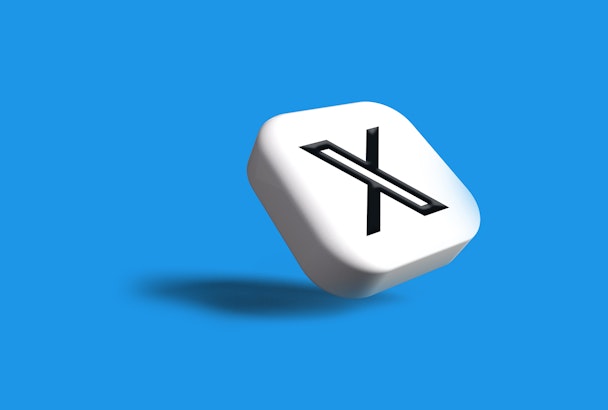A year of Elongate: The ongoing scandal of Elon Musk’s Twitter
Happy anniversary! It’s been a year since Elon Musk bought Twitter, now known as X. Social media expert Olivia Wedderburn looks back on a year of Muskian drama, and asks how much longer it will continue.

/ Rubaitul Azad via Unsplasj
We’re a year into the soap opera that is Elon Musk owning Twitter – yes, we all still call it that.
For such a volatile 12 months, it’s all been surprisingly predictable.
When the acquisition was inked, we advised our clients to ‘hope for the best, prepare for the worst’. We were worried about what would happen to the platform once half the workforce was made redundant, including their human rights, accessibility, AI ethics, and curation teams. We warned of figures and brands being too critical of Musk facing sanctions. We shared concerns about reinstating figures banned for hate speech. We even speculated that a name change could be imminent. It is depressing, but not surprising, that these worries were well-founded.
Advertisement
Twitter in turmoil: A potted history
The $44bn price tag Musk paid at the time raised plenty of eyebrows. His waiving of due diligence, and subsequent attempts to pull out of the deal, raised even more. Musk has since admitted he wouldn’t have bought Twitter if he wasn’t legally obliged to which is important context for his behavior as at the top of the company.
In his first move, Musk let go of huge numbers of Twitter’s staff – claiming the company simply couldn’t survive if it continued to make the same losses. These financial issues were clearly aggravated by the enormous bills the company now had to pay to service the debt for Musk’s buyout. Twitter’s functionality has been varying degrees of haywire ever since.
Perhaps the most obvious low point came in July, when non-verified users could only see 600 tweets a day. The supposed reason for this was to limit the usage of bots. Given that it essentially broke the entire platform to the extent that Meta quickly launched a rival, Threads, this isn’t particularly convincing. Something was clearly going badly wrong behind the scenes.
Elon has pushed for paid subscriptions to get the level of service most users felt they were entitled to for free; failed to combat misinformation; delegitimized the platform; and given advertisers more than enough reason to restrict ad spend, or steer clear of the platform altogether.
Advertisement
What is Musk trying to do?
Musk claims to be a ‘free speech absolutist,’ but the evidence suggests that his commitment on this tends to waver depending on the issue at hand. We’ve seen him reinstate plenty of controversial accounts, from Donald Trump to Jordan Peterson, and he’s stepped in to defend Russell Brand.
He’s been much more accepting of content restrictions in some countries. In response to the BBC asking why content criticising Narendra Modi was taken down in India, he said “The rules in India for what can appear on social media are quite strict, and we can’t go beyond the laws of a country.” We’ve also seen interventions in policing language to reinforce his own views, claiming that the words ‘cis’ or ‘cisgender’ are considered slurs on the platform.
He’s made no secret that he wants to move the platform on from social into the world of super apps that see huge success in the Eastern hemisphere. He’s talked of having an “everything app” called X before the takeover. And maybe he truly believes that Twitter can act as the foundation of the next frontier in tech social. There are 350 million monthly users who haven’t gone anywhere, despite the app becoming increasingly buggy, dysfunctional, and unmoderated.
Concerningly, though, it often seems the main reason he wants to be involved in Twitter is simply for the lols. Whether it’s personally intervening in algorithm adjustments to boost his own engagement, (seemingly jokingly) designating his dog chief executive after losing a poll, or just the endless stream of provocative posts, it seems Musk’s priority has been to attract a constant stream of attention.
Suggested newsletters for you
How many years does Twitter have left?
So where next for Twitter? My bet is in the cold hard ground. The horrifying level of misinformation we’ve seen in relation to the crisis in Israel and Gaza has proven beyond all doubt that this is not a place for responsible brands to advertise. The lukewarm uptake for subscriptions simply isn’t going to plug that cost.
Just last week, there was news that Musk is going to start charging all users in certain countries an annual cost of $1 for basic access. Given how reluctant people are to hand over their card details, particularly to a service they distrust or dislike, Twitter will likely hemorrhage users if this is rolled out worldwide.
This could see Twitter reach a critical mass of lost engagement, where even the more heavily-addicted users start to look for their fix elsewhere. Whether this will be the final death knell remains to seen, but it’s starting to feel like it’s just a matter of time.
Content by The Drum Network member:

UNLIMITED
UNLIMITED is the UK’s leading conversion agency. Our mission is to create genuine business advantage for clients, and we do this by uncovering behaviour-led insights...
Find out more
